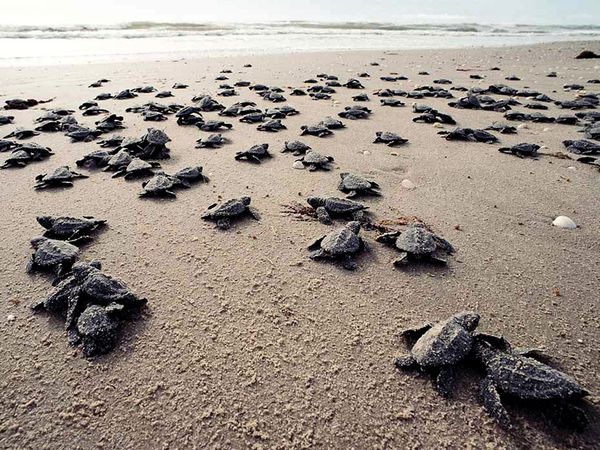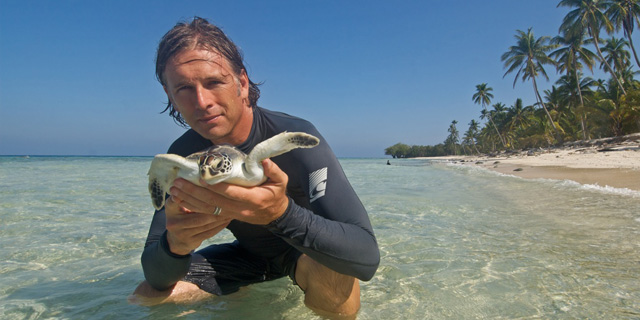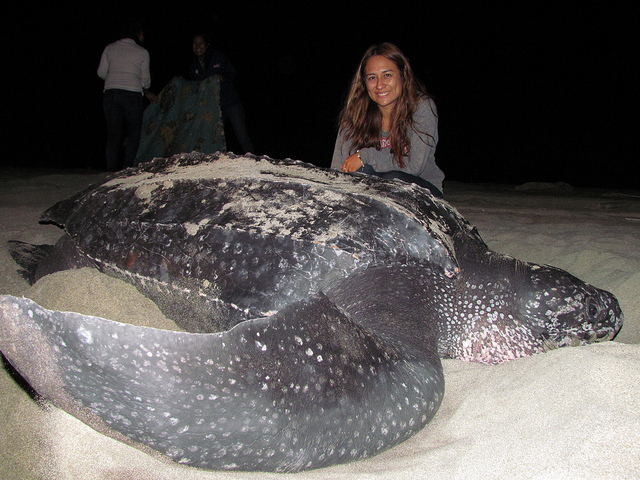I still remember the first time I walked down the trail to Upper Trestles, on the western edge of San Onofre State Beach in Southern California, to compete in a NSSA high school contest. While the memories of the waves I caught that day 42 years ago in 1979 as a 15-year old have faded, I still vividly recall the green canopy of San Mateo Creek and our first glimpse of the dunes and breaking waves beyond the train tracks. It was magical.

The over 2,000 acres of San Onofre State Beach as well as the watershed of San Mateo Creek provides habitat for 11 endangered species. Photo: Jeremiah Klein
I’m not the only surfer who feels that way. Greg Long, who grew up riding the cobblestone A-frames of Trestles prior to embarking on his career as a professional big wave surfer, calls San Onofre State Beach a “real treasure.”
“San Mateo Creek is one of but a few remaining unadulterated and channelized watersheds in Southern California,” says Long. “When I walk down to the beach it’s like entering a time capsule, home to multiple endangered species and the cultural history of the Acjachemen people, offering a glimpse into what coastal Southern California may have been like once upon a time before all the development.”

Trestles is on the village site known as Panhe, which is known to archeologists to be at least 9,600 years old. Photo: Danny Hardesty
Greg’s sentiment is echoed by Dan Silver, CEO of the Endangered Habitats League who has worked tirelessly to protect the park and the San Mateo Creek watershed. “San Onofre State Beach and Trestles remain important for a rare confluence of values – cultural, biological, and recreational,” says Silver. “It is rich in Native American history. An estuary, stream, and uplands shelter an astonishing 11 endangered species.”
But, before it was ever a state park or a world famous surf spot, San Mateo Creek, was an Acjachemen village known as Pahne, or “place at the water.” According to Callie Shanafelt Wong, “Today the Acjachemen consider what is left of Panhe to be their most sacred site. Pre-contact, the village spanned the entire valley now occupied by the Camp Pendleton Marine Base, San Onofre State Beach and much of the town of San Clemente. To this day the tribe conducts ceremony and an Ancestor Walk on a small designated area within San Mateo campground, which is also a burial site.” To learn more about the cultural significance of Panhe and San Onofre State Beach through the lens of the Acjachemen, see The Indigenous Coastal Stewards Who Helped Save Trestles.

Greg Long at the California Coastal Commission Hearing on the proposed TCA Toll Road at the Del Mar Fairgrounds, February 7, 2008 with groms from Imperial Beach. With thousands in attendance, it was the largest public gathering at a Coastal Commission meeting in California history.
For the Acjachemen Nation and the more than 2.5 million annual visitors who enjoy the beaches, waves, trails, and campgrounds of San Onofre State Beach, making it one of the top five visited state parks in California, clearly, this iconic landscape is irreplaceable.
It is amazing to think that even with all the love for San Onofre State Beach, and especially Trestles, by the public and especially surfers, that the Transportation Corridor Agency or TCA had the audacity to propose building a toll road through the middle of the park. But that is exactly what happened. Starting in 2005, thousands of surfers came out to protest the TCA’s proposed highway project that would have torn apart one of California’s most beloved state parks.
Video of Lower Trestles by Danny Hardesty
“‘Save Trestles’ became a rallying cry for surfers and environmentalists in Southern California,” says WILDCOAST Associate Director Zach Plopper. “It was really inspiring.”
A foundational element in the campaign, was, according to Shanaeflt Wong, the development of the “United Coalition to Protect Panhe (UPCC) to assert the importance of the area to the Juaneño Band of Mission Indians/Acjachemen Nation.” The UPCC involvement played a major role in the California Coastal Commission’s decision to deny the TCA a permit for the highway project.
At a February 7, 2008 Commission hearing at the Del Mar Fairgrounds on the toll road project, Rebecca Robles, an Ajcachemem tribal member from San Clemente told the Coastal Commission, “I encourage you, I implore you to uphold the California Coastal Act. Panhe is one of the remaining sites where we can enjoy our spiritual individuality. I ask you to protect this sacred site.”

The fact that the first-ever winner-take-all Rip Curl WSL Finals is being held at Lower Trestles, highlights the importance of what the World Surf League calls one of the most high performance waves in the world. – Photo: Jeremiah Klein
As a conservationist who has been involved in multiple environmental campaigns in the U.S. and internationally, I was continually blown away by the ingenuity, creativity, diversity, and energy of one of the most groundbreaking and comprehensive movements to protect the coast in California history.
“The decades-long Save Trestle campaign has provided a treasure trove of lessons on how to save our beloved coastal places for everyone and forever,” says Dr. Chad Nelsen, CEO of the Surfrider Foundation.
“First lesson, perseverance pays off. We refused to give up for decades and we won. Second, people power matters. We were outspent one hundred to one, but we had thousands of people on our side who showed up when it mattered and that worked. Third, it takes a village. We had a strong, well-led coalition where everyone could focus on their strengths, whether that was grassroots organizing of surfers or political and legal strategy. We needed it all to win,” adds Nelsen.
The campaign, that included a lawsuit by the California Native Heritage Commission on behalf of the Acjachemen and another one by the Save San Onofre Coalition (disclosure- WILDCOAST, the organization I am the Executive Director of is a member of the coalition), ultimately culminated last year in the signing by California Governor Gavin Newsom of Assemblymember Tasha Boerner Horvath’s Assembly Bill 1426.

Surfers, indigenous peoples, youth, businesses, and ocean lovers in Southern California teamed up to save Trestles and protect San Onofre State Beach from the building of road projects through the middle of the park. Photo: Jeremiah Klein
“AB 1426 permanently protects San Onofre State Beach,” explains Boerner Horvath, “which is home to the last remaining undeveloped watershed in Southern California – the San Mateo Creek – from road projects that would have cut through the creek bed, ruined the popular campground, and disturbed habitats of rare and endangered species. As a third-generation North San Diego County resident, I’m proud to say we saved Trestles for the generations to come and will continue to protect this coastal gem.”
Currently, efforts are underway to renew the San Onofre State Beach lease which is crucial for its long-term conservation and management. The park was created back in 1971 through an agreement between Governor Ronald Reagan and President Richard Nixon that established a 50-year lease with the U.S. Navy. That lease is up this year.
“After six years of working with Steve Long and the San Onofre Parks Foundation on the San Onofre State Beach lease renewal, on August 31, 2021 a three-year extension to the 50-year lease that was set to expire at midnight that same day was signed by the Navy and California State Parks,” says longtime Trestles surfer and San Onofre Parks Foundation Founding President Bob Mignogna. “The San Onofre Parks Foundation is committed to working with the Navy and the State of California on an affordable 50-year lease renewal, so that the pristine surf breaks in the park, including Lower Trestles, will continue to be open to the public for generations to come. The three-year extension gives all parties the opportunity to prepare that contract thoughtfully.”

As a uniquely intact coastal ecosystem, Trestles is a constant reminder of why protecting and conserving our coast and ocean is so imperative to our sport. Photo: Jeremiah Klein
“If we learned anything from COVID, it’s that we love to recreate outdoors,” says Nelsen. “Our surf spots and coastal state parks in California are recreational gems that are more popular today than ever. We must protect these amazing resources for today, tomorrow and future generations.”
As a reminder, WILDCOAST, the World Surf League, and a coalition of over 90 NGOs and businesses are calling on world leaders to adopt a target at the 2021 United Nations Convention on Biological Diversity to protect and conserve at least 30 percent of the global ocean, including international waters, by 2030. We urge world leaders to be driven by science, and led by an inclusive process that embraces all stakeholder communities and considers the ocean’s value to the peoples of every nation.
For more details and to sign and share the petition, visit weareoneocean.org
A version of this article was originally posted on World Surf League.





